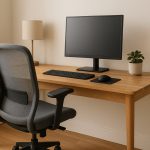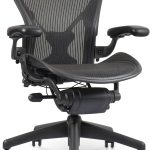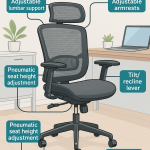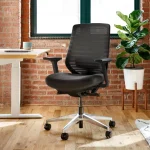Looking to upgrade your setup without emptying your wallet? It’s more than possible—with the right know-how. If you’re browsing for affordable ergonomic chairs, you don’t have to settle for mediocre comfort or questionable quality. The trick is learning what features truly make a difference so you get the most for your money.
Below, I’ll walk you through six essential features to watch for when shopping budget-friendly ergonomic office chairs—plus smart tips for finding the best deal.
Want to compare across all price ranges? See the best ergonomic chairs in our full guide.

1. Adjustable Lumbar Support (The Backbone of Comfort)
A good chair should adapt to you—not the other way around.
Your lumbar region naturally curves inward, and chairs that fail to support it can lead to lower back pain after long sitting sessions.
💡 What to look for:
- A sliding or height-adjustable lumbar pad that targets your lower back curve.
- Some budget-friendly chairs use elastic mesh tension or an air-filled lumbar bladder, giving you fine-tuned control without the high-end price tag.
Real-world example:
The Hbada and SIHOO M18 chairs both include movable lumbar sections under $200—proving that adjustability isn’t limited to premium brands.
2. Seat Height and Depth Adjustments (Personalized Fit)
If your chair doesn’t fit your body proportions, even the fanciest mesh won’t save your posture.
Your feet should rest flat, with knees bent at roughly 90°, and there should be about 2–3 inches of space between your thighs and the chair edge.
✅ Must-have features:
- Pneumatic seat height adjustment (almost standard today)
- Sliding seat pan or adjustable seat depth—critical for shorter or taller users
These adjustments prevent leg numbness, help circulation, and ensure your spine stays aligned no matter your height.
3. Breathable Mesh or High-Density Foam (Stay Cool, Stay Comfy)
Long workdays can turn into sweat marathons if your chair traps heat.
That’s why breathable mesh fabric or supportive memory foam is key.
- Mesh: Ideal for hot climates and long hours—it promotes airflow and dries fast.
- Foam: Choose high-density foam (≥50 kg/m³ if listed) that doesn’t flatten over time.
Pro Tip: Avoid “budget mesh” that feels plasticky or sharp to the touch. It might sag within months and lose all tension.
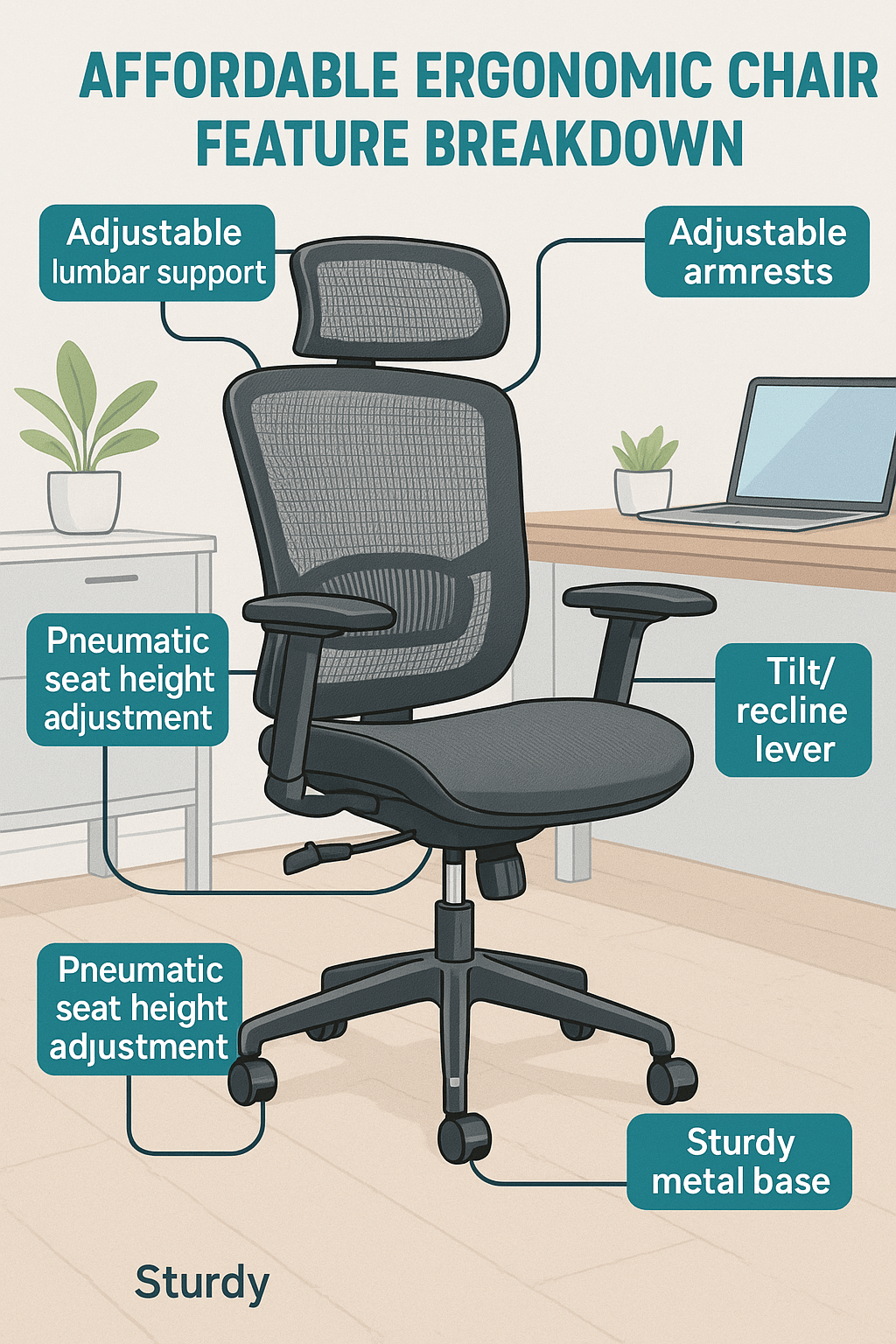
4. Adjustable Armrests (Shoulder-Saver Secret)
Armrests are your unsung heroes for neck and shoulder health.
Fixed arms often cause your elbows to flare out or shrug your shoulders upward—classic signs of poor ergonomics.
🔍 Look for:
- Height and width adjustability
- Rotating or pivoting arm pads (known as 3D or 4D armrests)
- Soft-touch material for comfort during long typing sessions
Even on a tight budget, these details make a huge difference in wrist comfort and reduce the risk of repetitive strain injuries.
5. Tilt & Recline Mechanism (Movement = Health)
Sitting doesn’t have to mean staying still.
A synchro-tilt mechanism, where the seat and back move together, encourages subtle posture shifts—keeping your core active and reducing stiffness.
Other things to check:
- Tilt tension knob to control resistance
- Lockable recline angles for reading or resting between calls
🧠 Did you know?
Regular movement while seated improves blood flow and reduces fatigue—one reason why dynamic chairs often get higher ergonomic ratings.
6. Build Quality and Warranty (Your Durability Check)
A cheap chair that breaks in six months isn’t a bargain—it’s landfill.
Instead, look for solid metal bases, nylon casters, and weight ratings above 250 lbs for long-term reliability.
Many budget-friendly models now come with 2–3 year warranties, a reassuring sign the manufacturer stands behind its build quality.
Bonus: Smart Shopping Tips for Real Value
- Compare verified reviews: Focus on comments about comfort after 3+ months, not just out-of-box impressions.
- Check the return policy: Even great chairs might not fit your body—test risk-free if possible.
- Watch seasonal deals: Holiday or back-to-school sales often cut 30–40% off mid-range ergonomic models.
- Assembly support: Look for brands offering clear instructions or video setup guides.
If you’re considering a premium upgrade, you can always explore high-end ergonomic alternatives like the Herman Miller Aeron—just remember that build quality isn’t all about price.
FAQs
Yes—if they include proper lumbar support, adjustability, and decent build materials. Many mid-range chairs now mimic features once exclusive to $800+ models.
It depends. Mesh stays cooler and feels lighter, while high-density foam provides more cushioned support. If you work long hours, a hybrid (mesh back + foam seat) is ideal.
Typically 2–5 years with normal use. Look for models with reinforced frames and replaceable casters for maximum lifespan.
Conclusion
Finding a quality affordable ergonomic chair isn’t about chasing brand names—it’s about knowing which features truly support your health and comfort.
Focus on lumbar adjustability, seat fit, breathable materials, and overall durability, and you’ll enjoy years of pain-free sitting without breaking your budget.
Ready to take the next step?
👉 Head back to our affordable ergonomic chairs guide to discover the top-rated models that fit every workspace and budget.ing on these core features, you can confidently choose an affordable ergonomic chair that’ll keep your spine happy, your workspace stylish, and your wallet intact.


